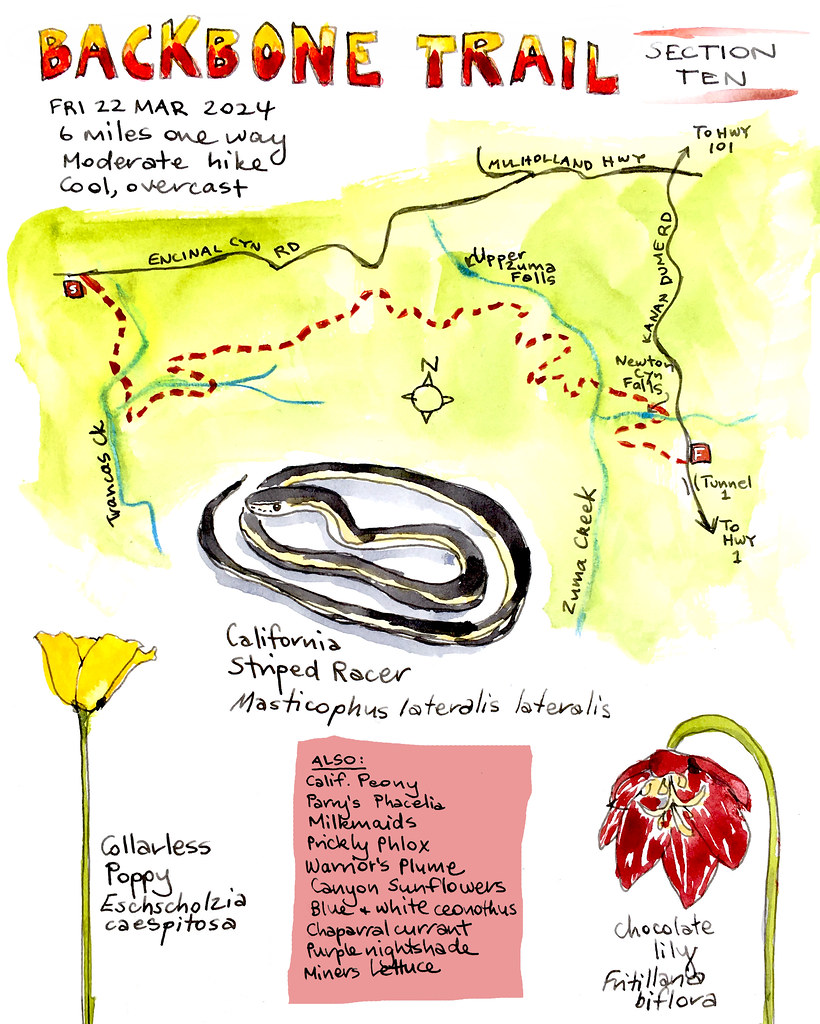
Spotted this handsome striped reptile out on the trail. The California kingsnake (Lampropeltis californiae) is endemic to the western United States and northern Mexico, and is found in a variety of habitats, including woodland chaparral, grassland, deserts, marshes, and even suburban areas. It is non-venomous, and kills its prey by constriction.
Wild California kingsnakes are typically encountered at a length of 2.5-3.5 feet (76 – 107cm), though they can grow larger. This one was smaller, maybe 18 inches / 45cm long.









